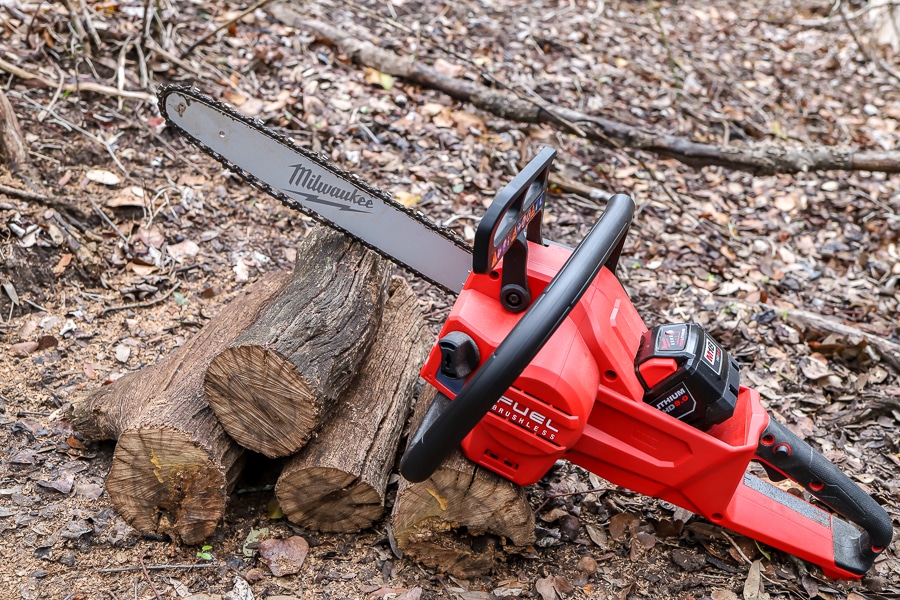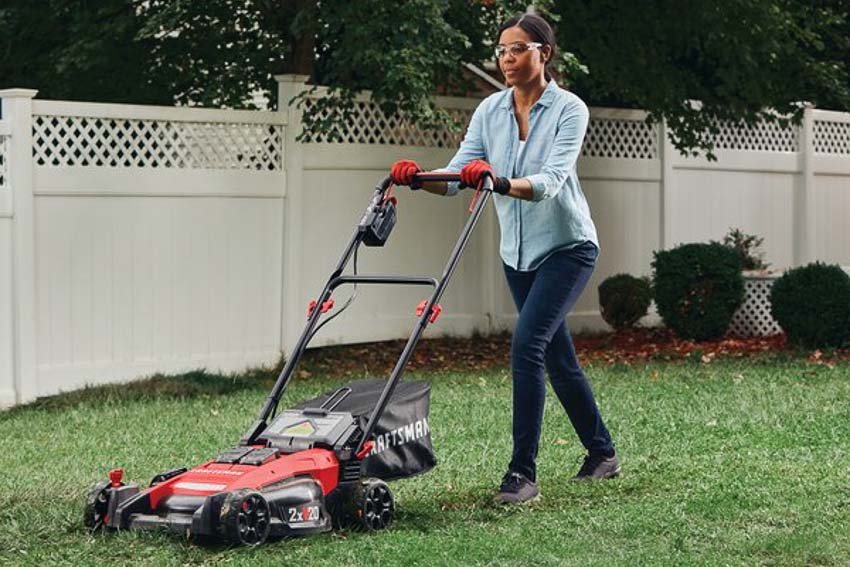
The evolution of outdoor power tools has significantly revolutionized the way we approach landscaping, gardening, and outdoor maintenance. From the simplicity of the hand-operated tools to the sophisticated, high-powered machinery of today, these tools have not only increased efficiency but also transformed the entire landscape maintenance industry.
Outdoor power tools encompass a diverse range of machinery designed for various outdoor tasks, from gardening to landscaping and maintenance. These tools, powered by electricity, batteries, or fuel, offer efficiency and convenience in handling tasks that would otherwise require extensive physical labor. They include lawn mowers, hedge trimmers, chainsaws, leaf blowers, and more. These tools have evolved from basic, manual implements to high-powered, precision-oriented machinery, integrating advanced technology to enhance performance, reduce environmental impact, and promote sustainability. Their development has significantly transformed the way outdoor tasks are approached, making them more manageable, efficient, and environmentally friendly.
Early Days: Transition from Manual to Power Tools
In the earlier days, the primary tools for outdoor work were basic and manual—axes, shovels, scythes, and manual lawnmowers. These demanded considerable physical effort, limiting the amount of work achievable and often leading to inconsistent results. However, the innovation of the first power tools brought about a drastic change. Electric lawnmowers and hedge trimmers emerged, reducing physical strain and significantly increasing productivity.
Evolution of Power Sources
The development of power tools has been closely linked to advancements in power sources. Initially, corded electric tools offered increased power, reducing the need for manual labor. However, the limitations of corded tools—restricted mobility and dependence on power outlets—led to the rise of cordless battery-powered tools. These cordless variants brought freedom of movement and enhanced convenience, allowing users to reach remote areas without worrying about cords or power sources. Furthermore, the evolution of lithium-ion batteries has significantly improved battery life and overall performance.
Precision and Efficiency
The innovation in outdoor power tools is not solely about power but also precision. Modern tools are engineered to be more precise, enabling users to trim, cut, or mow with accuracy, resulting in more polished and professional-looking landscapes. Features like adjustable cutting heights, multiple speed settings, and various attachments cater to different tasks, making them versatile and adaptable.

Technology Integration
The incorporation of technology into outdoor power tools has been a game-changer. Smart technologies now allow users to monitor and control tools remotely, providing real-time data on performance, battery life, and maintenance schedules through mobile applications. Additionally, sensors and automated functionalities enhance safety features, preventing accidents and ensuring smoother operations.
Environmental Impact and Sustainability
The shift towards sustainability has influenced the design and functionality of outdoor power tools. Manufacturers are increasingly focusing on creating eco-friendly tools that are energy-efficient and produce fewer emissions. Electric tools, in particular, are gaining traction as they significantly reduce carbon emissions compared to gas-powered alternatives. Furthermore, the utilization of renewable energy sources for charging battery-powered tools is being explored, aligning with the global push for sustainability.
Latest Innovations and Future Trends
Continued innovation in outdoor power tools shows no signs of slowing down. The integration of artificial intelligence and machine learning in these tools is being explored to optimize performance, customize user experiences, and provide predictive maintenance. Moreover, the use of robotics in lawn mowing and landscaping is becoming more prevalent, indicating a future where outdoor maintenance could be largely automated.
Frequently Asked Questions (FAQ)
What are outdoor power tools?
Outdoor power tools are mechanical devices designed to aid in landscaping, gardening, and outdoor maintenance tasks. These tools are powered by electricity, batteries, or fuel and are intended to perform various functions such as cutting, trimming, clearing, and cleaning outdoor spaces. They are used to enhance efficiency and reduce physical labor in outdoor maintenance activities.
Examples of power equipment:
Power equipment includes a wide range of tools used for outdoor tasks. Examples of power equipment commonly used are lawnmowers (electric, battery-powered, or gas-powered), leaf blowers, hedge trimmers, chainsaws, pressure washers, snow blowers, tillers, string trimmers, and various types of saws like circular saws and reciprocating saws used for outdoor applications.
Who owns EGO?
EGO is a brand known for its cordless outdoor power equipment, and it is owned by an entity called Chervon. Chervon is a global company that manufactures and markets power tools, outdoor power equipment, and related products under various brand names, including EGO.
Who makes EGO?
EGO is manufactured by Chervon, a multinational corporation known for designing and producing a wide range of power tools and outdoor power equipment. The brand EGO specifically focuses on battery-powered outdoor equipment such as lawn mowers, leaf blowers, string trimmers, chainsaws, and other related tools.

Advantages of Outdoor Power Tools:
- Efficiency and Time-Saving: Outdoor power tools significantly reduce the time and effort required for outdoor tasks. They accomplish work more quickly and efficiently compared to manual tools, allowing users to complete tasks in a fraction of the time.
- Enhanced Precision and Performance: These tools offer precise cutting, trimming, and mowing, resulting in a more professional and well-maintained outdoor space. Adjustable settings and multiple features cater to various tasks, ensuring a higher quality of work.
- Reduced Physical Strain: By eliminating the need for extensive manual labor, power tools reduce physical strain and fatigue. This makes outdoor maintenance more accessible to a broader range of users and promotes a healthier work environment.
- Increased Versatility: Many power tools come with interchangeable attachments or multifunctional features, allowing users to handle various tasks with a single tool. This versatility adds value and convenience to the tools.
- Technology Integration: The integration of technology in power tools enables smart functionalities, remote monitoring, and automation, making operations more convenient and user-friendly. Additionally, smart features contribute to safety and maintenance tracking.
- Environmental Benefits: Battery-powered tools and electric variants significantly reduce emissions and are more environmentally friendly compared to gas-powered alternatives. This supports sustainability efforts and reduces the ecological impact of outdoor maintenance.
Disadvantages of Outdoor Power Tools:
- Cost: High-quality outdoor power tools can be relatively expensive, especially those with advanced features or smart technology integration. Additionally, maintenance, repairs, and replacement parts can add to the overall cost.
- Dependency on Power Sources: Corded tools rely on a power outlet, limiting mobility and range. Battery-powered tools need recharging, which may interrupt tasks if the batteries run out, and cordless tools need an available power source for recharging.
- Noise and Pollution: Some power tools generate noise pollution, which can be disruptive in residential areas. Gas-powered tools contribute to air and noise pollution, which can be a concern for both users and the environment.
- Maintenance and Repairs: Like any machinery, outdoor power tools require regular maintenance and occasional repairs. This adds to the overall cost and may cause interruptions in outdoor tasks when tools are out of service for maintenance.
- Safety Concerns: Power tools, especially those with sharp blades or fast-moving parts, can pose safety risks if not used correctly. Accidents, such as cuts or injuries, may occur if safety precautions are not followed.
- Weight and Portability: Some heavy-duty outdoor power tools can be heavy and less portable, making them cumbersome to handle, particularly for extended periods, or in hard-to-reach areas.

Functions of Outdoor Power Tools
Outdoor power tools serve a wide array of functions designed to facilitate and streamline various tasks related to landscaping, gardening, and outdoor maintenance. Here are the primary functions these tools perform:
1. Cutting and Trimming:
- Lawn Mowers: For cutting grass to maintain lawns and larger outdoor areas.
- Hedge Trimmers: Specifically designed for trimming hedges and shrubs to maintain their shape and size.
- Chainsaws: Used for cutting trees, branches, and logs, both for maintenance and construction purposes.
- String Trimmers/Weed Eaters: Ideal for cutting grass and weeds in tight spaces or where lawnmowers cannot reach.
2. Clearing and Cleaning:
- Leaf Blowers: Used to clear leaves, debris, and grass clippings from lawns and driveways.
- Pressure Washers: For cleaning outdoor surfaces by using high-pressure water to remove dirt, grime, and stains.
3. Ground Preparation and Maintenance:
- Tillers/Cultivators: Used to prepare and maintain garden beds by loosening soil and mixing amendments.
- Aerators: Designed to perforate soil with small holes to allow air, water, and nutrients to penetrate the grass roots.
4. Pruning and Shaping:
- Pruning Saws: Intended for cutting branches and limbs from trees and shrubs.
- Pruners and Loppers: For trimming smaller branches, twigs, and dense foliage.
5. Digging and Excavation:
- Augers: Used for digging holes in the ground, typically for planting trees, installing fences, or erecting posts.
- Post Hole Diggers: Specifically designed for digging holes for posts or poles.
6. Snow Removal:
- Snow Blowers/Snow Throwers: Used to clear snow from driveways, sidewalks, and larger areas.
7. Maintenance Tools:
- Mowers and Grinders: Tools used to maintain the blades of various cutting tools to ensure they function properly.
- Battery Chargers: Essential for charging rechargeable batteries that power cordless tools.
8. Landscaping:
- Turf Rollers: Used for flattening the soil and laying turf or sod in landscaping.
- Edgers: For creating distinct boundaries between garden beds, lawns, and sidewalks.
- Generators: Though not directly used for landscaping, they provide power for outdoor tools in areas where electricity is not readily available.
The evolution of outdoor power tools has fundamentally transformed the way we approach outdoor maintenance and landscaping. From the transition of manual to power tools to the integration of cutting-edge technology and sustainable design, these tools have come a long way. They have not only increased efficiency and productivity but also reduced physical strain on users and minimized environmental impact. The trajectory of outdoor power tools indicates a promising future, where the blend of technology, sustainability, and efficiency will continue to shape the industry, offering more innovative solutions for maintaining our outdoor spaces.
NEWS
- Enhancing Outdoor Spaces: The Art of Outdoor Ornamentation
- Maximizing Efficiency and Power: The Evolution of Outdoor Power Tools
- The Timeless Allure of Outdoor Statues: A Reverence in Stone
- Unveiling the Top 5 Ecommerce Problems in Nigeria and How to Overcome Them
- Top 20 Profitable Business Ideas Nigerians Are Searching For.
- Is Love a Transaction? Exploring the Dynamics of Love and Relationships
- Shopum Launching on the 17th of April 2024: Unlocking the Future of Online Shopping: Introducing Shopum's Revolutionary Features
- Download Shopum and Shopum Earn Apps
